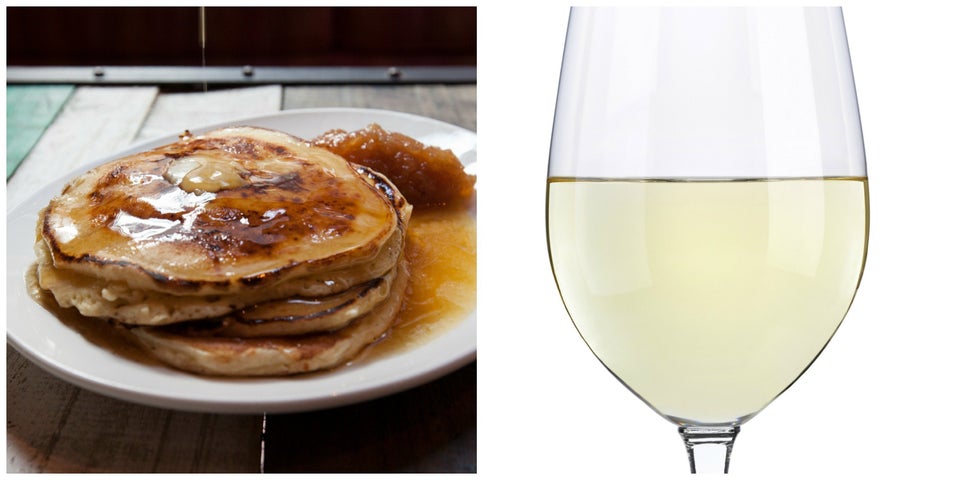Why do I feel like I already have a hangover the same night that I've been drinking? All I had was two glasses of red wine. With dinner.
It wasn't the first time I'd been stricken with a red wine headache; I tend to identify as a red drinker, but as a red drinker, headaches are a frustratingly common occurrence. What gives? Why do some people sometimes get headaches from drinking red wine?
"People come into the store citing red wine headaches all the time," Mike Johnson of Bottlerocket, a wine shop in New York City's Flatiron district, told me over the phone. "And typically, we believe that these headaches are a result of the drinker's sensitivity to sulfites." Brian Larky, a winemaker and the founder of Dalla Terra, said the same.
Sulfites are sulfuric compounds that occur naturally in wine, Mike told me--and they're also added to help preserve the wine. Some natural, biodynamic, or organic winemakers will add as little additional sulfites as possible (hence their "natural" labels), but "sulfites are necessary to stabilize the wine," Mike said. They stop the wine from refermenting once it's been bottled. (The legal sulfite addition is 350 parts per million, or ppm; most wines have about 120 ppm, and low-sulfite wines have between 0 and 20 ppm. And sulfites can naturally occur up to 40 ppm!)
Still, wine writer Alice Feiring says that if you get red wine headaches consistently, you should try a natural or biodynamic wine that has lower amounts of sulfites added, or at least uses only "molecular, elemental sulphur" rather than commercial, petrochemical sulphur. Alice maintains that there's a big difference between the two, and that she "immediately feels a pressure behind [her] eyes" when drinking conventional, rather than natural, low- or no-sulphur wines.
Related: 5 Ways to Gift Wine Like a Pro
I was still stumped by a few things: White wines actually have higher levels of naturally occuring sulfites than red wines--as do dried apricots. (Beer and cider also contain added sulfites.) So why don't people experience white wine headaches? "I think it has to do with the perception of the strength of things," said Mike. "People often talk about red wine as being stronger than white wine."
But Meg McNeill of Dandelion Wine in Greenpoint, Brooklyn, said she thinks sulfites get blamed too often for our red wine headaches. "I'm not a doctor, but I believe that [the cause is] the histamines in the skins of the grapes," she told me. Because red wines spend more time in contact with the skins--that's how red wine gets its color--they have higher levels of histamines than white wines, and are therefore much more likely to give you a headache than whites or rosés, especially if you're sensitive to histamines.
Meg wasn't sure if certain reds are more prone to cause headaches than others, but she posits that, in the vein of histamine contact, wines made with thicker-skinned grapes would be more likely to give you a headache than wines made with thinner-skinned grapes.
Related: How to Chill a Bottle of Wine Faster
Additionally, "Thicker skinned grapes have to ripen on the vine for a longer amount of time," said Laura Mooney, a wine and spirits consultant for Astor Wines & Spirits in New York City, "which makes for more sugar in the grape--which also usually makes for a higher alcohol content." Of course, a hangover is more significant than the red wine headache (which you get while you're drinking), but as Laura said, "If you have two glasses of zinfandel--at 14 or 15% ABV per glass, that's heavy-duty stuff."
If you know red wine often gives you a headache, consider steering clear of wines made from thick-skinned grapes (like Zinfandel, Syrah, and Cabernet Sauvignon) and choose a wine made from a thin-skinned grape (like Pinot Noir, Sémillon, and Merlot) instead. Or go for my favorite red, the Malbec: Even though Malbec grapes produce a very dark red wine, their skins are thin--and they don't give me a headache.
While the definitive cause is inconclusive, you can take a few steps to avoid the dreaded red wine headache: Look for low-or-no-sulfite wines, especially biodynamic ones; and lean towards wine made from thinner-skinned grapes. But perhaps most effectively, as the wine director at Eli's Table, Randall Restiano, told me, the most effective thing you can do is to make sure you eat plenty and drink lots of water before moving on to wine.
First photo by Mark Weinberg; final two photos by James Ransom
Also on HuffPost:
